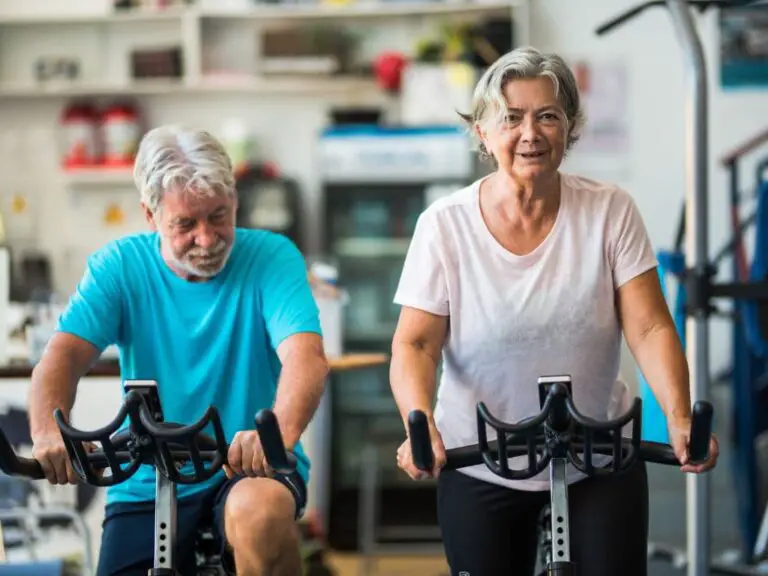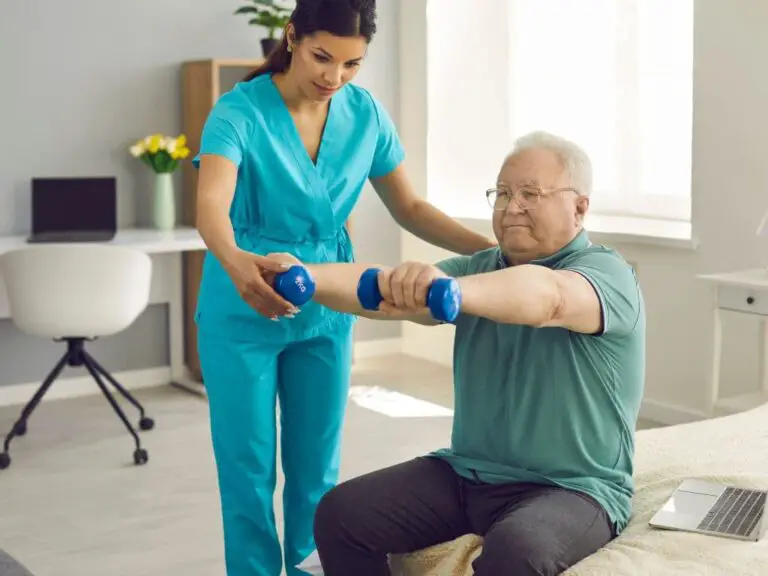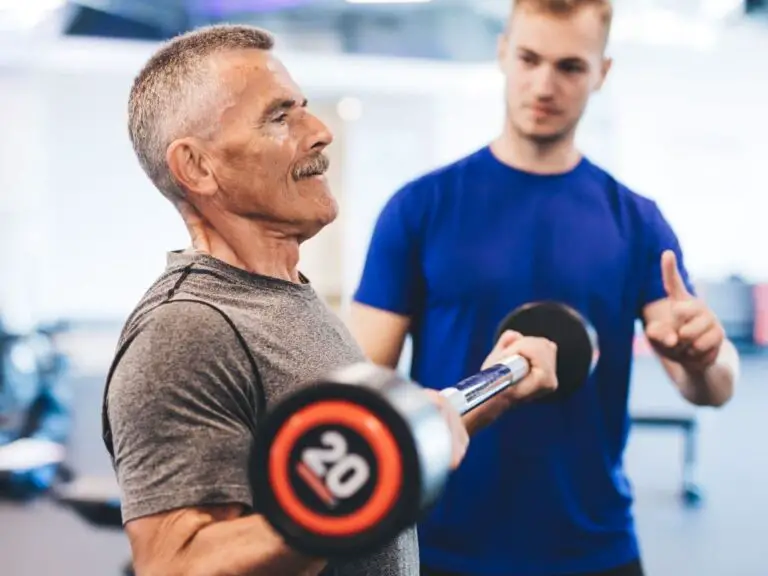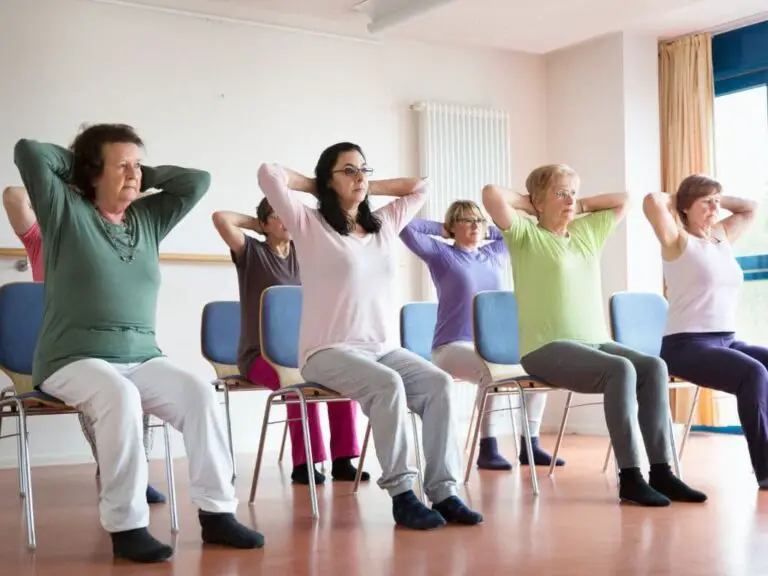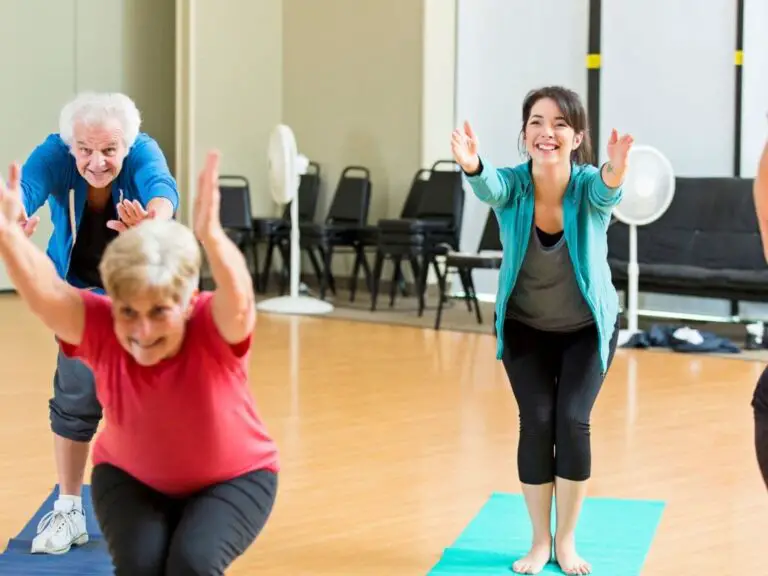What Are the Causes of Weak Legs in the Elderly?
Weakness in the legs is a common condition that affects many elderly people. As we age, our muscles, bones, and joints go through changes that can lead to fatigue, pain, and loss of strength in the legs. This decline in mobility can have major impacts on an older person’s quality of life, independence, and health.
What are the causes of weak legs in the elderly? Weak legs in the elderly are primarily caused by age-related factors such as diminishing muscle mass and bone density, chronic fatigue, and joint pain. Other contributing factors include underlying health conditions like arthritis or neuropathy, poor nutrition, lack of exercise, and certain medications. These issues lead to decreased strength, mobility limitations, and increased risk of falls.
Understanding the causes of weak legs is the first step to preventing and treating this troublesome issue.

What Are the Causes of Weak Legs in the Elderly?
Two of the primary factors that contribute to weak legs in seniors are diminishing muscle mass and bone density. As we get older, we naturally lose some muscle tissue through a process called sarcopenia. The muscles in the legs atrophy from disuse and shrink in size. This muscle wasting leads to weakened leg strength and mobility limitations. In addition, bones become more porous and brittle with advanced age, a condition known as osteoporosis. Thinning of the bones in the legs increases the risk of fractures and painful joints. These age-related changes to muscle and bone degrade leg function and stability.
Chronic fatigue and joint pain in the knees, hips, and ankles can also undermine leg strength in older adults. The exhaustion of muscles from overuse and the strain of supporting body weight takes its toll over time. Leg joints are commonly affected by arthritis as cartilage erodes, leading to inflammation, stiffness, and limited mobility. The discomfort and throbbing associated with arthritis frequently discourages activity, resulting in weaker leg muscles. Managing energy levels and joint problems through exercise, medication, or supplements may help alleviate leg weakness.
What Are the Symptoms of Weak Legs in the Elderly?
Those with diminished leg vitality often experience difficulty walking or standing for long periods. Climbing stairs becomes challenging without the power to lift the legs properly. Leg cramps and spasms are common, especially at night or after overexertion. Numbness or tingling sensations may happen from nerve compression or reduced circulation. A tendency to drag the feet while walking also signals leg weakness. These symptoms typically start gradually but can worsen over time.
Along with the above symptoms, weakened leg muscles greatly impact balance and coordination. Unsteady legs lead to an increased risk of falls, especially on uneven terrain or slippery surfaces. Without the leg power to quickly adjust stance or catch oneself, seniors with poor lower body strength can experience dangerous tumbles and injuries. Addressing leg weakness is crucial for maintaining stability and reducing fall risk.
How Is Weakness in Legs Diagnosed in the Elderly?
Doctors will diagnose elderly leg weakness through a combination of medical history, physical examination, and testing. They will ask about symptoms, pain levels, falls or injuries, and impact on daily activities. Observation of walking, range of motion, and leg dexterity helps gauge functional status. Tests like bloodwork, x-rays, MRIs, EMG, and nerve conduction studies help pinpoint causes like neuropathy or arthritis. The diagnostic process assembles key health details to formulate an effective treatment approach.
The patient’s medical history provides insight into conditions or factors that may be weakening the legs. Doctors will ask about chronic diseases, injuries, surgeries, and medications that could affect leg strength. They will also inquire about symptom progression and difficulty with tasks requiring leg power. The physical exam evaluates atrophy, pain, reflexes, sensation, gait, and balance. Comparing leg strength and function provides clues to patterns of muscle deterioration. These details aid development of a customized therapy plan.
What Are the Available Treatments for Weak Legs in the Elderly?
The mainstays of treatment are exercise-based rehabilitation programs that rebuild leg muscle and stamina through targeted strength training, low-impact aerobics, stretching, and balance work. Assistive walking devices like canes or walkers can provide support and stability. Medications like pain relievers or steroids may alleviate joint inflammation and discomfort. Treating any underlying conditions like vascular disease or managing diabetes can maximize circulation and nerve function. Maintaining a healthy diet and activity level preserves mobility. Surgery, injections, braces, or orthotics could also be options in severe cases.
Along with exercise and therapy, diet plays an important role in managing weakened legs in seniors. Key nutrients that support leg health include:
- Protein to build and repair muscle tissue
- Calcium and vitamin D for bone strength
- Omega-3 fatty acids to reduce inflammation
- Magnesium and potassium to prevent leg cramps
- Vitamin B12 and iron for energy and circulation
- Antioxidants like vitamin C to protect cells from damage
Eating lean meats, dairy, fish, leafy greens, legumes, nuts, and fortified foods provides the essential compounds for healthier legs. Staying hydrated is also crucial.
What to Eat for Weak Legs in the Elderly
Here are some of the top foods to incorporate in your diet to nourish and strengthen aging legs:
- Salmon – High in anti-inflammatory omega-3s to ease joint pain.
- Milk and yogurt – Packed with calcium, potassium, protein, and vitamin D for stronger bones and muscles.
- Eggs – Contain leucine to stimulate muscle protein production plus vitamin B12.
- Oats – A great source of slow-burning carbohydrates for energy and magnesium to prevent leg cramps.
- Leafy greens like kale and spinach – Loaded with vitamin C, calcium, and antioxidants for bone and muscle health.
- Lentils and beans – Provide plant-based protein, iron, magnesium, and potassium to boost leg vitality.
- Almonds and walnuts – Good sources of vitamin E, magnesium, and arginine to improve circulation.
- Berries – Rich in antioxidants that protect cells from damage caused by inflammation and aging.
- Bananas – Packed with potassium to reduce muscle cramps and spasms.
- Sweet potatoes – Contain beta carotene, vitamin C, potassium and magnesium for stronger legs.
How Can Weak Legs in the Elderly Be Prevented?
While some age-related leg weakness is inevitable, there are ways seniors can proactively preserve their mobility and leg strength. Regular exercise designed to maintain muscle mass and joint flexibility is key. Activities like walking, swimming, cycling, strength training, and stretching keep leg muscles limber and sturdy. A nutritious diet with adequate protein, calcium, antioxidants, and essential vitamins also nurtures strong legs. Quitting smoking, limiting alcohol, and managing conditions like obesity, heart disease, or diabetes reduces risk factors for weakness. Gentle, frequent movement minimizes stiff joints. Preventive care through annual checkups supports healthy legs.
Along with lifestyle measures, regular visits with doctors can help detect early signs of weakness, neurological issues, or disease that impacts legs. Bloodwork, bone scans, neurological tests, podiatry exams, and specialized physicals identify problems before they escalate into mobility loss. Monitoring vitals, circulation, infections, injuries, and arthritis spots trouble areas. Preventive healthcare services optimize treatment outcomes by intercepting leg detriments through prompt interventions. Annual wellness visits make leg preservation a priority.
What Are Some Exercises To Prevent Weak Legs in the Elderly?
Here are some of the best exercises to prevent weak legs in the elderly:
Aerobic Exercises
Low-impact aerobic activities help maintain muscle mass and keep joints mobile. Recommended options include:
- Walking – A simple, accessible exercise that conditions legs without strain. Start slowly and walk up to 30 minutes per day.
- Swimming – Water buoys the body to reduce strain on joints while moving legs through full range of motion.
- Cycling – A non-weight-bearing activity that improves endurance and circulation in the legs. Use a stationary or recumbent bike.
- Water Aerobics – Water’s resistance exercises legs without taxing joints. Classes provide guidance and camaraderie.
Strength Training
Lifting light weights 2-3 times per week tones muscles while stimulating bone density. Examples include:
- Leg presses – Boost lower body strength by pressing weight plates or resistance bands away from the hips while seated.
- Wall squats – Tone quadriceps and glutes by holding a shallow squat position against a wall.
- Calf raises – Stand with hands on a chair and raise up on tiptoes to work calves.
- Leg extensions – Sitting, lift lower legs against resistance to target quadriceps.
Balance and Flexibility
Exercises that develop balance and flexibility help maintain stability and prevent injury. Options include:
- Tai Chi – Flowing sequences enhance balance, strength, and concentration through gentle movements.
- Yoga – Poses like Warrior and Tree Pose improve balance, flexibility, and leg muscle function.
- Stretching – Stretch hamstrings, calves, quads, hips daily to retain range of motion.
- Balance Training – Standing on one foot, walking heel-to-toe, and using wobble boards improves stability.
Here is a summary table of the best exercises for preventing weak legs:
| Exercise Type | Examples |
|---|---|
| Aerobic | Walking, swimming, cycling, water aerobics |
| Strength Training | Leg presses, wall squats, calf raises, leg extensions |
| Balance and Flexibility | Tai chi, yoga, stretching, balance training |
Along with specific exercises, staying generally active with gardening, dancing, golf, and household chores keeps legs conditioned. It’s best to consult a physical therapist to develop a personalized exercise program targeting areas of weakness.
What Are the Risks of Falls and Injuries for People With Weak Legs?
Seniors with diminished leg strength and instability face greatly heightened risks of falls and resultant injuries. The debilitated muscles cannot appropriately support body weight or quickly react to trips and slips. Simple activities like standing up, using stairs, or walking become precarious without sturdy legs to rely on. The significantly increased likelihood of falling leads to much higher rates of serious injury including fractures, head trauma, dislocations, and lacerations. Weak legs make it difficult to catch oneself before crashing downwards. Fall-related wounds then further limit mobility in an adverse cycle.
Preserving balance, stability, and mobility through focused leg strengthening and fall prevention methods is urgent for injury protection. Specialized balance training, Tai Chi, assistive devices, vision correction, home hazard removal, and medication management are key interventions to maintain function and avoid disastrous tumbles. Podiatry and physical therapy build resilience against threats to equilibrium. Prioritizing leg health partnerships between patients, families, and providers is vital for safeguarding wellbeing. With vigilance and proper care, the dangers of fall-related harm can be minimized.
How Can People With Weak Legs Stay Mobile and Independent?
The use of assistive devices such as canes, walkers, scooters, or crutches helps compensate for diminished leg capabilities so that daily activities remain achievable. Proper footwear with arch support reduces strain. Handrails, ramps, and raised chairs facilitate safe movement. Choosing wheels over legs for longer distances preserves energy while avoiding overexertion. Careful selection and fitting of support aids matched to current strength levels bolsters confidence and sustains independence. Instruction in correct device techniques prevents accidents. Adaptive equipment empowers seniors to stay active and engaged.
Along with assistive equipment, focusing on emotional health is key for coping with mobility changes. Support groups, cognitive behavioral therapy, life coaching, and meditation cultivate acceptance and optimism to avoid discouragement. Elders who reinforce valuable skills beyond walking, appreciate remaining abilities, pace themselves, and prioritize meaningful activities build resilience. Continuing beloved hobbies and safely sustaining social connections preserves quality of life. Adjusting living spaces and asking for help when needed also smooths the process. With resourcefulness, flexibility, preparation, and a constructive perspective, people can thrive despite mobility limitations.
What Are the Social and Emotional Impacts of Weak Legs in the Elderly?
As legs weaken, older adults often develop a fear of falling that severely limits their physical and social functioning. This anxiety about taking a dangerous tumble leads many to curtail activities and interactions outside the home where falls seem more likely. Over time, this imposed isolation from loved ones and communities takes a heavy emotional toll in the form of depression, low mood, and erosion of self-esteem. Reclaiming life beyond the home through fall prevention skills training, assistive equipment, home modifications, and addressing anxiety is crucial for emotional health. With proper support, elders can diminish restrictions on treasured roles and relationships.
In addition to anxiety, elders with weakened legs frequently contend with depression as their world shrinks. Loss of mobility equates to loss of freedom and spontaneity, leading to sadness, irritation, and despair. The inability to participate in beloved physical activities like gardening or golf is hugely dispiriting. Situational depression often accompanies loss of capability compounded by disease burdens, pain, and isolation. Mood disorders interfere with rehabilitation motivation and success. Treating depression medically while providing emotional support fosters poise and optimism to navigate mobility transitions. With compassion and help, elders can craft fulfilling realities despite physical setbacks.
Conclusion
Weak legs in the elderly result from age-related declines in muscle mass, bone strength, nerve function, joint health, and circulation. Key symptoms include difficulty walking, pain, fatigue, numbness, and unsteadiness. Weak legs severely impact physical functioning and fall risk, but also emotional health. Preventing and treating leg weakness relies on exercise, nutrition, assistive devices, fall prevention programs, medical care, and social support. While some loss of mobility is expected with aging, purposefully building leg strength, stability, confidence, and coping abilities allows elders to maintain health and independence for years to come. Addressing leg weakness requires a holistic approach across physical, social, medical, emotional, and practical realms for optimal elder wellness.
Frequently Asked Questions
-
What causes weak legs in old age?
Seniors often experience weak legs due to the loss of muscle mass. We age and become less active which causes us to lose muscle strength.
-
Why do old people’s legs give way?
Nerve damage can be caused by direct injury, tumor growth, prolonged pressure, diabetes, or long-term spine pressure. Spinal cord injuries. One of the leading causes for legs giving out is a spinal cord injury. Although these injuries can be severe, they should still be assessed immediately by a spine specialist.
-
Why am I losing strength in my legs?
Sciatica is the leading cause of leg weakness. This refers to problems with the spine that can lead to compression or pinching of nerves. There are many causes of sciatica.
-
What causes sudden leg weakness in elderly?
These are the main causes of sudden legs weakness among seniors. However, sudden weakening in the legs may also occur due to strokes and a variety of other conditions, including peripheral neuropathy and Parkinson’s disease, ALS and spinal tumors.
-
What to do when you can’t walk anymore?
Balance aids such as canes or walkers may help to maintain your parents’ balance. They also might relieve pressure on the hips, knees, ankles, and legs. For elderly persons with limited lower body strength who can’t walk or need to use a wheelchair, scooters or wheelchairs may be a better option.
-
What deficiency causes weakness in legs?
Vitamin B1 (Thiamine). Vitamin B1 deficiency may cause tired and heavy legs, cramps and fatigue after running. Whole grains, whole grains, meat, beans, dairy products and legumes are all rich sources of vitamin B1.
-
What causes sudden inability walking in elderly?
Ataxia can be caused by injuries and illnesses. Head injury, strokes, brain hemorhage and infections are all possible causes. Ataxia can appear slowly in some cases. Hypothyroidism and alcohol abuse are just a few of the conditions that can cause ataxia to appear gradually.
-
Does walking strengthen your legs?
Walking increases strength and endurance. You will be able to walk longer and stronger, with stronger calves as well as hamstrings. Walking on hills and climbing stairs is a great way to strengthen your legs.
-
Why do elderly lose ability to walk?
As we age, our muscle mass decreases. This can cause a decline in balance and coordination. It also affects how you walk. Neurological disorders such as dementia and musculoskeletal conditions can accelerate this process.
-
How long does it take to strengthen weak legs?
After completing a leg exercise program, you’ll likely see results in two to four weeks. You will notice a slight increase in stamina, and some muscle definition. It can take three to four months for you to notice any improvements in your leg strength or stamina, depending on how fit you are.


